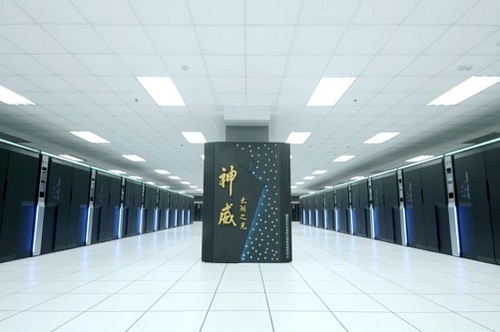China overtakes US in latest top 500 supercomputer list
The release of the semiannual Top 500 Supercomputer List is a chance to gauge the who’s who of countries that are pushing the boundaries of high performance computing (HPC). The most recent list shows that China is now in a class by itself, reports Enterprise Cloud News (Banking Technology’s sister publication).
China now claims 202 systems within the Top 500, while the US – once the dominant player – tumbles to second place with 143 systems represented on the list.
Only a few months ago, the US had 169 systems within the Top 500 compared to China’s 160.
The growth of China and the decline of the US within the Top 500 has prompted the US Department of Energy to dole out $258 million in grants to several tech companies to develop exascale systems, the next great leap in HPC. These systems can handle a billion billion calculations a second, or one exaflop.
However, even as these physical machines grow more and more powerful, a good portion of supercomputing power is moving to the cloud, where it can be accessed by more researchers and scientists, making the technology more democratic. Cray and Microsoft recently announced a partnership to deliver HPC resources through the Azure cloud.
In terms of the most powerful supercomputing systems, the Top 500 List hasn’t changed much since the first 2017 version was released in June.
The Sunway TaihuLight, an HPC system developed by China’s National Research Centre of Parallel Computer Engineering & Technology (NRCPC), retains its number one ranking with a performance of 93 petaflops.
One petaflop is one quadrillion (1 million billion, or 1015) floating point calculations per second.
The Sunway TaihuLight is currently installed at the National Supercomputing Centre in Wuxi.
The second most powerful system is also located in China. The Tianhe-2, which is based at the National Supercomputer Centre in Guangzhou, has capacity of 33.9 petaflops.
Third place belongs to the Piz Daint in Switzerland, which is a Cray XC50 system that used Nvidia’s Tesla P100 graphic processing unit (GPU) chips. It has a capacity of 9.6 petaflops.
The fourth most power supercomputer is Japan’s Gyoukou system, which is deployed at the Agency for Marine-Earth Science and Technology – home of the Earth Simulator. Gyoukou clocks in at 19.14 petaflops.
In fifth place is Titan, a Cray supercomputer located at the US Department of Energy’s Oak Ridge National Laboratory in Tennessee. The system fell from fourth to fifth place in the new rankings with a performance of 17.59 petaflops.
Despite its overall drop, the US still has three other systems listed within the top ten, including two more built by Cray and one designed by IBM.Japan also has two additional systems within the top ten. Overall, Hewlett Packard Enterprise (HPE) has installed the most systems on the Top 500 List, with 122 supercomputers and HPC systems attached to the company.












































